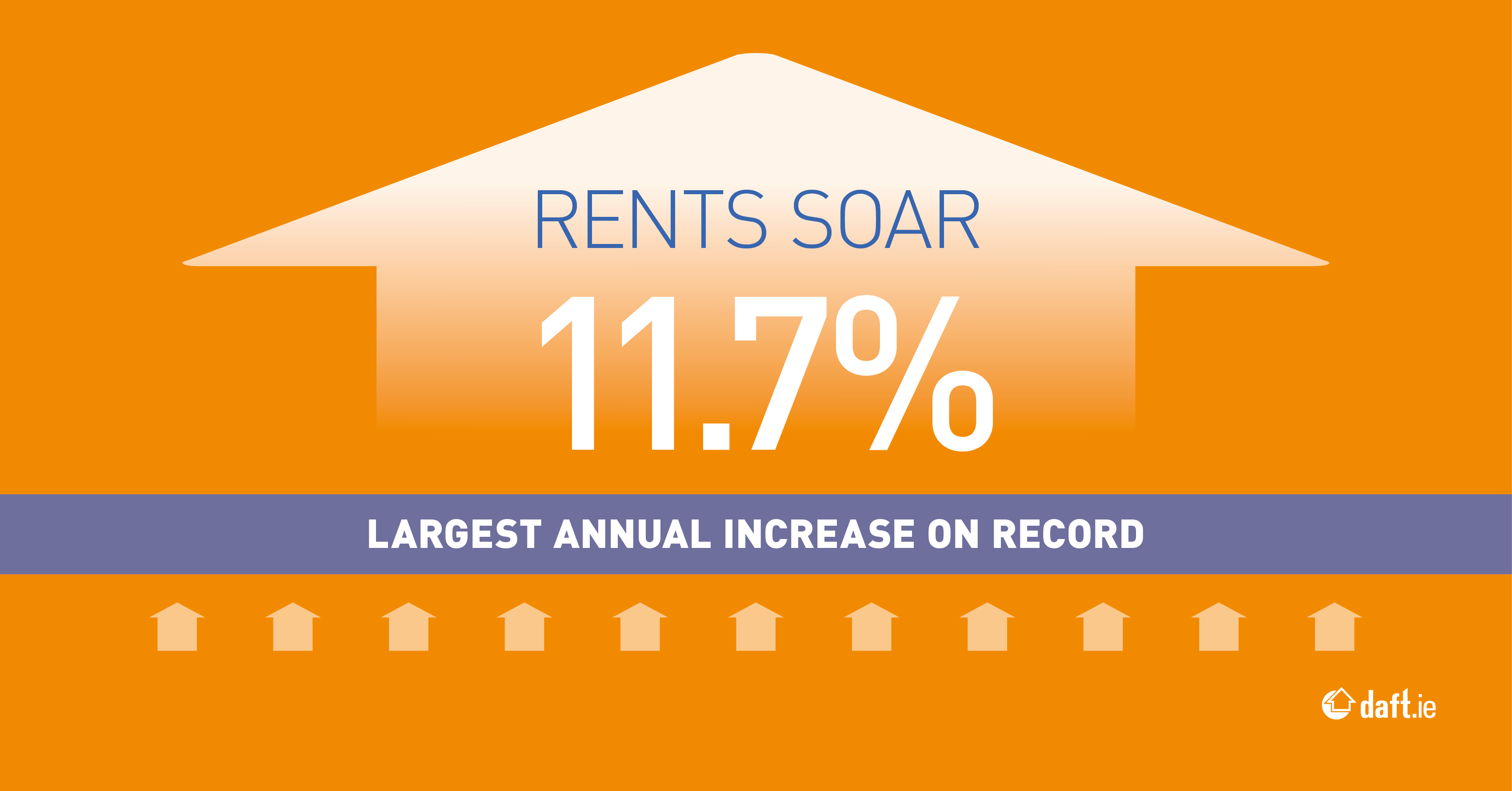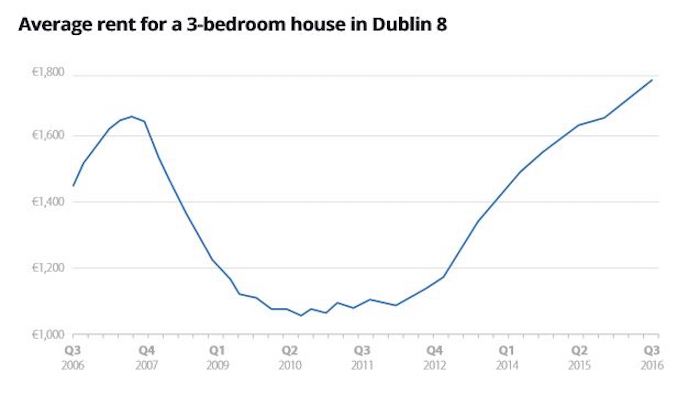Irish Rental Report Q3 2016 | Daft.ie
Daft Reports
- Ronan Lyons (House Price, Q1 2024)
- Ronan Lyons (Rental Price, Q4 2023)
- Ronan Lyons (House Price, Q4 2023)
- Ronan Lyons (Rental Price, Q3 2023)
- Ronan Lyons (House Price, Q3 2023)
- Ronan Lyons (Rental Price, Q2 2023)
- Ronan Lyons (House Price, Q2 2023)
- Ronan Lyons (Rental Price, Q1 2023)
- Ronan Lyons (House Price, Q1 2023)
- Ronan Lyons (Rental Price, Q4 2022)
- Ronan Lyons (House Price, Q4 2022)
- Ronan Lyons (Rental Price, Q3 2022)
- Ronan Lyons (House Price, Q3 2022)
- Ronan Lyons (Rental Price, Q2 2022)
- Ronan Lyons (House Price, Q2 2022)
- Ronan Lyons (Rental Price, Q1 2022)
- Ronan Lyons (House Price, Q1 2022)
- Ronan Lyons (Rental, Q4 2021)
- Ronan Lyons (House Price, Q4 2021)
- Ronan Lyons (Rental, Q3 2021)
- Ronan Lyons (House Price, Q3 2021)
- Ronan Lyons (Rental, Q2 2021)
- Ronan Lyons (House Price, Q2 2021)
- Ronan Lyons (Rental, Q1 2021)
- Ronan Lyons (House Price, Q1 2021)
- Ronan Lyons (Rental, Q4 2020)
- Ronan Lyons (House Price, Q4 2020)
- Ronan Lyons (Wealth, H2 2020)
- Ronan Lyons (Rental, Q3 2020)
- Ronan Lyons (House Price, Q3 2020)
- Ronan Lyons (Housing, July 2020)
- Ronan Lyons (Housing, June 2020)
- Ronan Lyons (Housing, May 2020)
- Ronan Lyons (Rental, Q1 2020)
- Ronan Lyons (House Price, Q1 2020)
- Ronan Lyons (Rental, Q4 2019)
- Ronan Lyons (House Price, Q4 2019)
- Ronan Lyons (Wealth, H2 2019)
- Ronan Lyons (Rental, Q3 2019)
- Ronan Lyons (House Price, Q3 2019)
- Pierre Yimbog (Rental, Q2 2019)
- Ronan Lyons (House Price, Q2 2019)
- Ronan Lyons (Wealth, H1 2019)
- Ronan Lyons (Rental, Q1 2019)
- Ronan Lyons (House Price, Q1 2019)
- Ronan Lyons (Rental, Q4 2018)
- Ronan Lyons (House Price, Q4 2018)
- Ronan Lyons (Wealth, H2 2018)
- Ronan Lyons (Rental, Q3 2018)
- Ronan Lyons (House Price, Q3 2018)
- Shane De Rís (Rental, Q2 2018)
- Ronan Lyons (House Price, Q2 2018)
- Ronan Lyons (Wealth, 2018)
- Ronan Lyons (Rental, Q1 2018)
- Ronan Lyons (House Price, Q1 2018)
- Ronan Lyons (Rental, Q4 2017)
- Ronan Lyons (House Price, Q4 2017)
- Ronan Lyons (Rental, Q3 2017)
- Ronan Lyons (House Price, Q3 2017)
- Katie Ascough (Rental, Q2 2017)
- Ronan Lyons (Wealth, 2017)
- Ronan Lyons (House Price, Q2 2017)
- Ronan Lyons (Rental, Q1 2017)
- Ronan Lyons (House Price, Q1 2017)
- Ronan Lyons (Rental, Q4 2016)
- Ronan Lyons (House Price, Q4 2016)
- Ronan Lyons (Rental, Q3 2016)
- Ronan Lyons (House Price, Q3 2016)
- Ronan Lyons (School Report, 2016)
- Conor Viscardi (Rental, Q2 2016)
- Ronan Lyons (Rail Report, 2016)
- Ronan Lyons (House Price, Q2 2016)
- Ronan Lyons (Rental, Q1 2016)
- Ronan Lyons (House Price, Q1 2016)
- Ronan Lyons (Rental, Q4 2015)
- Ronan Lyons (House Price, Q4 2015)
- Ronan Lyons (Rental, Q3 2015)
- Ronan Lyons (House Price, Q3 2015)
- Marcus O'Halloran (Rental, Q2 2015)
- Ronan Lyons (House Price, Q2 2015)
- Ronan Lyons (Rental, Q1 2015)
- Ronan Lyons (House Price, Q1 2015)
- Ronan Lyons (Rental, Q4 2014)
- Ronan Lyons (House Price, Q4 2014)
- Ronan Lyons (Rental, Q3 2014)
- Ronan Lyons (House Price, Q3 2014)
- Domhnall McGlacken-Byrne (Rental, Q2 2014)
- Ronan Lyons (House Price, Q2 2014)
- Ronan Lyons (Rental, Q1 2014)
- Ronan Lyons (House Price, Q1 2014)
- Ronan Lyons (Rental, Q4 2013)
- Ronan Lyons (House Price, Q4 2013)
- Ronan Lyons (Rental, Q3 2013)
- Ronan Lyons (House Price, Q3 2013)
- Ronan Lyons (Rental, Q2 2013)
- Ronan Lyons (House Price, Q2 2013)
- Ronan Lyons (Rental, Q1 2013)
- Ronan Lyons (House Price, Q1 2013)
- Ronan Lyons (Rental, Q4 2012)
- Ronan Lyons (House Price, Q4 2012)
- Lorcan Sirr (Rental, Q3 2012)
- Padraic Kenna (House Price, Q3 2012)
- John Logue (Rental, Q2 2012)
- Ronan Lyons (House Price, Q2 2012)
- Barry O'Leary (Rental, Q1 2012)
- Seamus Coffey (House Price, Q1 2012)
- Joan Burton (Rental, Q4 2011)
- Ronan Lyons (House Price, Q4 2011)
- Philip O'Sullivan (Rental, Q3 2011)
- Sheila O'Flanagan (House Price, Q3 2011)
- Rachel Breslin (Rental, Q2 2011)
- Constantin Gurdgiev (House Price, Q2 2011)
- Cormac Lucey (Rental, Q1 2011)
- Eoin Fahy (House Price, Q1 2011)
- Lorcan Roche Kelly (Rental, Q4 2010)
- Ronan Lyons (House Price, Q4 2010)
- John Fitzgerald (Rental, Q3 2010)
- Patrick Koucheravy (House Price, Q3 2010)
- Gary Redmond (Rental, Q2 2010)
- Jim Power (House Price, Q2 2010)
- Jill Kerby (Rental, Q1 2010)
- Brian Lucey (House Price, Q1 2010)
- Michael Taft (Rental, Q4 2009)
- Alan McQuaid (House Price, Q4 2009)
- Dr. Charles J. Larkin (Rental, Q3 2009)
- Emer O'Siochru (House Price, Q3 2009)
- Ronan Lyons (Rental, Q2 2009)
- Oliver Gilvarry (House Price, Q2 2009)
- Brian Devine (Rental, Q1 2009)
- Dr. Liam Delaney (House Price, Q1 2009)
- Gerard O'Neill (Rental, Q4 2008)
- Ronan Lyons (House Price, Q4 2008)
- Dr. Stephen Kinsella (Rental, Q3 2008)
- Moore McDowell (House Price, Q3 2008)
- Shane Kelly (Rental, Q2 2008)
- Fergal O'Brien (House Price, Q2 2008)
- Eoin O'Sullivan (Rental, Q1 2008)
- Dermot O'Leary (House Price, Q1 2008)
- Dan O'Brien (Rental, Q4 2007)
- Frances Ruane (House Price, Q4 2007)
- John McCartney (Rental, Q3 2007)
- Ronnie O'Toole (House Price, Q3 2007)
- Ronan Lyons (Rental, Q2 2007)
- Constantin Gurdgiev (House Price, Q2 2007)
- Fintan McNamara (Rental, Q1 2007)
- Rossa White (House Price, Q1 2007)
- Geoff Tucker (Rental, Q4 2006)
- Damien Kiberd (House Price, Q4 2006)
- Pat McArdle (House Price, Q3 2006)
- Marc Coleman (House Price, Q2 2006)
- David Duffy (House Price, Q1 2006)
- Austin Hughes (House Price, Q4 2005)
- David McWilliams (House Price, Q2 2005)
The figures in this latest Daft.ie Rental Report make grim reading for most, including those renting and those in charge of Ireland's housing system. The average rent nationwide rose by almost 4% in the third quarter, equalling the largest three-month increase seen in the second quarter of the year. Combined with other recent increases, it means that the annual rate of rental inflation in Ireland is now 11.7%, the highest recorded by the Daft.ie Report since its series start in 2002.

For much of the past four-to-five years of rent increases, the story has been about where has been driving the national increase in rents. Particularly in 2013 and 2014, it was Dublin that was responsible for pulling up the national average rate of rental inflation: in mid-2014, rents were 15% higher than a year previously. By late 2015, it was outside Dublin – in particular the other urban markets and the commuter counties around Dublin that were driving the national increases.
Now, however, there is little to choose between Dublin and other markets. The rate of inflation in Dublin rents has increase from 8.2% in late 2014 to 12.1% between July and September. Outside Dublin, the average rate of inflation is 10.9% and is only significantly below this in Connacht-Ulster. And even there, Cavan is an exception. A more detailed analysis points to the same conclusion: rents are rising at double-digit rates in 37 of the 54 markets analysed in the Daft.ie Report, up from just 17 markets as recently as late 2015.
This is having a disastrous effect on social cohesion as well as on Irish competitiveness. The graph accompanying this commentary shows the average rent for a three-bedroom home in Dublin 8 over the last ten years. The tail end of the Celtic Tiger can be seen in the increase from below €1,450 per month to almost €1,650 between mid-2006 and late 2007. After that, though, rents fell to less than €1,050 in late 2010 and early 2011. They did not increase much during 2011 and 2012 and by late 2012 were still less than €1,150. Since then, however, average rents for a three-bedroom home in Dublin 8 have risen dramatically and now stand at €1,800 a month, 10% higher than the previous Celtic Tiger peak.

This rise in living costs of almost three quarters, in less than five years, is a symptom of strong demand for housing – as economic recovery continues and the population continues to grow. But there is nothing inevitable about housing costs rising with demand. That only happens when supply fails to respond. And the complete absence of any meaningful level of construction in Ireland over the past five years is a systemic failure in desperate need of policy solutions.
The shortage is particularly acute when it comes to apartments in the Dublin area. Apartments are a pressure point for demand, as they offer options for downsizers, students and other one- and two-person households. It is this size of households that will form the bulk of new demand, Ireland matches trends in other high-income countries, with dwindling household size.
While there are perhaps political victories in measures to help new families buying newly built three- and four-bedroom houses, Ireland does not lack this particular kind of property. Rather, Ireland has lots of "non-families" in family homes. The best way to bring around a reallocation of housing stock in Ireland – consistent with political reality – is to tempt these non-families out of family homes.

There are two challenges. The first is mindset, particularly on the part of local authorities. Ireland is not at all immune to NIMBYism and its excuses for pushing development onto greenfield sites, rather than in already built-up areas such as suburbs and market towns. However, it is precisely the densification of our suburbs and towns that Ireland needs.
Local authorities should be required to set targets for particular types of property, including for apartments blocks suitable for older households and for purpose-built student accommodation if relevant. Options for fining them for refusing to allow necessary development should also be explored. When it comes to housing supply, local authorities have a dual mandate: they certainly have a role in protecting the existing stock and amenities. But they, more than any other stakeholder, have a duty to ensure adequate supply of new homes.
The second challenge is construction costs, a topic I have mentioned frequently in recent commentaries to this report. Personally, I would very much like to be able to state that this problem has been, or is on the way to being, solved – if only to allow me to move on to new topics for future commentaries.
However, the scale of the challenge here remains depressing. It has never been viable to build apartment blocks in the vast majority of this country. Where it has been built, it has been due to subsidies (in the case of social housing) or extraordinary tax incentives (in the case of Section 23 disease). There is no more urgent task facing the Minister for Housing, his department and advisers, the Housing Agency and others involved in 'Rebuilding Ireland' than understanding why the costs of building, and building apartments in particular, is so dramatically out of line with our own incomes and indeed with the cost in other countries.
This latest report highlights that, without addressing that, rents will continue to rise and further damage Irish competitiveness and Irish social cohesion.


